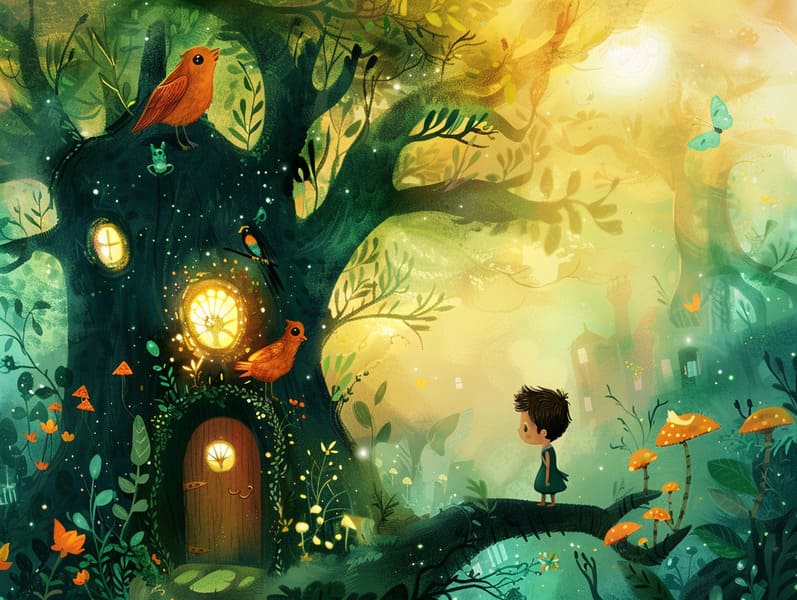Tracing the Heritage of Children's Fairy Tales with Their Unending Mystique.
Tracing the Heritage of Children's Fairy Tales with Their Unending Mystique.
Blog Article

Traditional fairy tales have historical significance. These narratives have been recounted from one generation to the next centuries before they were ever recorded. They sprang from a variety of societies, including Middle Eastern traditions. They were initially transmitted among older generations, often carrying themes and messages aligned with the societal norms and beliefs of the time.
The renowned Brothers Grimm, the two Grimm brothers, were among the first to gather and publish many of these beloved tales. Their published works, "Grimm's Fairy Stories," included stories like "Cinder Maid," "Little Brother and Little Sister," and "Schneewittchen," which have since become cornerstones in the world of classic fairy tales. Similarly, the Danish author's imaginative narratives, such as "The Story of the Little Mermaid," and "The Duckling that Could," have won hearts worldwide, guaranteeing their place in the pantheon of famous fairy tales.
Even though they are old, traditional fairy tales remain as important as ever, especially as nighttime stories for kids. These whimsical stories are now available in different formats, including vividly illustrated books, delightful animations, and web-based fairy tales.
Their enduring popularity can be connected to several delightful features:
Significant Morals: Old fairy tales often teach important moral lessons. Fairy tales like "The Boy Who Cried Wolf" teach the significance of honesty, while "The Race of the Tortoise and the Hare" illustrate the benefits of persistence and unpretentiousness. These narratives offer the young clear distinctions between correct and incorrect, shaping their moral compass in a subtle yet lasting way.
Sympathy and Perception: Old fairy tales frequently showcase characters facing challenges and struggles, urging children to relate with their struggles and support their triumphs. For instance, "The Tale of Beauty and the Beast" conveys the virtue of looking beyond appearances to realize the true character of a soul, encouraging tenderness and knowledge.
Cultural Perception: Many fairy tales are deeply ingrained in the cultural contexts from which they grew. Reading these tales can provide informative snapshots into different traditions, promoting a sense of global respect and acknowledgment.
Creativity and Fantasy: The enchanted elements in old fairy tales—mythical creatures—generate children’s creative minds. These narratives carry readers to magical realms, engendering inventive thinking and a sense of astonishment that persists a lifetime.
Ancient fairy tales are not only charming but also didactic. They act as charming tools in building various brain and heart skills in kids. When fairy tales are recited, they cultivate communication skills by showing new word meanings and complex sentence structures. This practice also nurtures hearing abilities and mindfulness, as young readers keep up with the story, prepared to see what happens next.
Furthermore, deliberating the themes and characters of traditional fairy tales can nurture intellectual skills and cognitive skills. Children are guided to detect patterns, anticipate outcomes, and comprehend cause and effect. These talks also benefit young readers reveal their thoughts and feelings, strengthening their emotional intelligence.
In today’s digital age, the presence of online storybooks has made these stories more reachable than ever. Web-based platforms and programs give ample collections of children's fairy tales that can be explored or listened via anytime, anywhere. Fairy tales recited are particularly sought after, offering an fascinating method for children to take part in these fantastical tales. Audiobooks and narrated videos transport characters and settings to life, often supplemented by entrancing harmonies and songs that amplify the tale experience.
The timeless fascination of classic fairy tales lies in their ability to adjust to changing times while maintaining their core values. Contemporary modernizations of these narratives often introduce more different protagonists and modern settings, making them relevant to today’s audience. However, the key lessons of daring, warmth, and even-handedness remain unchanged, continuing to influence kids of all ages.
Traditional fairy tales also offer a sense of serenity and understanding. They deliver a well-structured narrative with a plain beginning, middle, and end, often drawing to a close with the settlement of conflicts and the triumph of right over wrong. This assuredness can be soothing for little ones, delivering a sense of steadfastness in an variable world.
Timeless fairy tales continue to spellbind and enlighten new generations, maintaining their grace and relevance in modern society. As children's bedtime stories, they present to a perfect blend of wonder and wisdom, backing moral values, empathy, and creativity. The availability of digital fairy tales and the commonness of fairy tales told out loud warrant that these timeless stories remain attainable to new generations.
By protecting and broadcasting these tales, we continue to pay tribute to the rich tapestry of lore and cultural heritage. Whether you are viewing a vividly illustrated book, accessing a web-based library, or listening on an read-aloud story, the check here spell of children's fairy tales is always within reach. These narratives teach us of the steadfast effect of tales and its ability to unify us across centuries and lands.
No matter if you are exploring a beautifully illustrated book, perusing a digital collection, or hearing an audio story, the beauty of children's fairy tales is always within reach.
These tales remind us of the perpetual influence of fairy tales and its ability to tie us across centuries and lands, weaving a spell that enchants and educates alike.